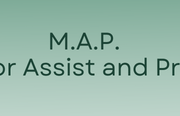Prerogatives to journalists needed to protect them, the Italian Anti-Mafia Attorney says
Questo articolo è disponibile anche in:
Moreover every time a vexatious lawsuit is dismissed, a trial of the accuser for slander should be started – Crimes against reporters requires specialized prosecutors
OSSIGENO 19 May 2019 – This interview with the Italian National Anti-Mafia Attorney Federico Cafiero De Raho is taken from the Report “Italy. So much mafia, so little news“, produced by Ossigeno per l’Informazione for the European Centre for Press and Media Freedom in Leipzig (ECPMF) with the support of the European Commission.
How much importance do you attach to the role that information can play in making the fight against the mafia and corruption more effective?
A lot of importance. Journalism can play a major role in the fight against the mafia and corruption but it is not without risks. I would like to recall that 28 Italian journalists were killed between 1960 and 1993 because of their work. Eleven of them were killed in Italy by mafias and terrorism and the remaining 17 abroad while documenting similar events. The silent and tenacious community formed by reporters, young and old, who day in day out work whilst facing risks and bearing the weight of isolation, loneliness and the consequences of unresolved problems, is certainly the most authentic and precious legacy that the eleven Italian journalists killed over the years by mafias and terrorism has left us.
How many Italian journalists have been subjected to threats and intimidation?
It is not possible to provide an exact number. But, certainly, there are many, as the available data that I summarize here indicates. In 2017, the Provincial Committees for Public Order and Security found 126 cases of intimidation. In the same year, the same Committees proposed 176 “supervision measures” to protect the same number of journalists. The Central Joint Forces Office for Personal Security of the Ministry of the Interior accepted and applied these measures.
Then there are the data provided by “Ossigeno per l’Informazione”, the observatory promoted by the National Federation of the Italian Press (FNSI) and the Order of Journalists, which since 2006 has identified over 3700 serious violations against as many journalists and other media operators all listed by name. In 2017, Ossigeno identified serious violations (intimidation, threats, retaliation and abuse) against 423 journalists, bloggers, and video operators. Comparing this data to those provided by the same Observatory for the previous ten years, it can be concluded that this phenomenon manifests itself continuously and maintain an alarming trend. Faced with this situation, at the end of 2017 the “Coordination Centre for monitoring, analysis and permanent exchange of information on the phenomenon of intimidating acts against journalists” was established at the Ministry of the Interior. The President of the National Federation of the Italian Press (FNSI) and the President of the Order of Journalists also participate.
How many threats against journalists come from the mafia? Among the cases detected by Ossigeno 38 per cent come from the mafia.
I can say that the episodes of violence or intimidation committed by members of mafia organizations against journalists and other information workers are numerous.
To what extent does information actually play a role in this field in Italy?
There are few journalists who are dedicated to dealing with the events of the mafia and corruption. It is precisely the depiction of the phenomenon that is not made, neither in its totality nor specifically where there are evident signs and manifestations even in the areas concerned. This is what exposes journalists the most because, since there are few who dedicate themselves to dealing with these issues, it is clear that they become targets for mafias and other criminal organizations to hit.
Do you believe that the editors and publishers of newspapers reject proposals from journalists to deal with or to investigate in depth news on the mafia?
The scant attention of newspapers is the consequence of a deliberate editorial choice. I just cannot understand on which monitoring, on what type of statistics or other serious survey this editorial choice was based, given that most of the time this observation of scant attention is answered by their stating that the issue of mafias does not interest the readers, the population. In my opinion precisely the opposite is true: knowledge of the mafia enables us to better combat them. Just as the knowledge of corruption allows us to understand and prevent it. Therefore, keeping silent means facilitating, supporting, and making it easier to carry out certain criminal operations. The mafias are strong because they are supported by widespread silence, “omertà”: a silence dictated by fear. More newspapers and more journalists are required, committed to talking about mafias, the financial flows they govern, the mafia bourgeoisie, the collusion of actors in the economy and politics, and the methods and channels of infiltration and pollution of the legal economy. The mafias want silence and for this reason they intimidate, attack and kill journalists who, by talking about them, attract the attention of the enforcement bodies of the state.
Could you point to investigative journalism that has positively paved the way for important official investigative and legal developments? Could you cite some recent examples?
The examples are numerous. I will limit myself to mentioning five of the most recent:
- Federica Angeli, journalist of the newspaper la Repubblica who on the 19th April 2018 testified against members of the Spada clan in Ostia also for the threats suffered since 2013, she began to document, with her articles, the map of power and criminal affairs of the mafia families of Ostia. She has been living under police protection for five years.
- Daniele Piervincenzi, freelance investigative journalist who went to Ostia to interview Roberto Spada and was savagely attacked. A few days later the Public Prosecutor’s Office of Rome issued an instruction for the arrest of Spada for the crime of private violence aggravated by the mafia method and multiple aggravated injuries; the hearing is in progress;
- Maria Grazia Mazzola, a journalist of the state broadcaster RAI, was violently attacked on February 9th in a district of Bari where Mafia families are based, where she went to carry out an investigation on the children of those families imprisoned for murder and others crimes; criminal proceedings are underway for this case too (also in this case the application of the aggravating circumstance of the mafia method has been proposed);
- Paolo Borrometi, journalist victim of a violent assault, which produced fractures in various parts of the body, by elements of the Sicilian Mafia; he is also living under police protection since 2014;
- Michele Albanese, a Calabrian journalist, has lived under police escort since 2014. The protection measure was not introduced following a direct threat, but due to the content of a conversation wire-tapped by the judicial bodies in which the leaders of the ‘Ndrangheta crime syndicate spoke of the aggravation produced by his articles and discussed the retaliatory measures to be taken.
These incidents gave a further impulse to investigative activities that were in part already underway and have had a re-launch thanks to the world of information.
Between local and national newspapers, are there different roles, responsibilities and risks with regard to information on the mafia and corruption?
It is precisely the local press that provides the best information on the facts of the mafia and corruption. But that information exposes local reporters to mafia threats and violence. In fact, there are many journalists who, precisely because they have built up locally-based information, even on very tightly defined areas, have been enormously exposed to danger. To give some examples, I am thinking of Michele Albanese and Paolo Borrometi. But there are many others.
And the national newspapers?
If national newspapers paid more attention to dealing with mafia events, local reporters would probably be less exposed to risk.
What can be done in Italy to prevent the frequent spurious use, for intimidation and retaliation purposes, of libel complaints in the press and lawsuits for damages?
Anyone filing a lawsuit is asking for criminal proceedings to be initiated against someone. I think that when the complaint is unfounded, whoever filed it should be subjected to a charge of aggravated slander. This amendment should be introduced into the criminal code to prosecute those who, in this way, prevent the exercise of free information. Something is required that can discourage both the pretentious lawsuit and the reckless litigation. It is necessary because it is obvious that the journalist is generally the weaker party compared to the people or entities that are the subject of the information he or she is providing. The journalist is generally an individual who in the exercise of the profession moves in relative isolation and often does not have the resources that allow him or her to meet certain demands for compensation. This is evident that when a journalist who carries out a public interest function by conducting an investigation into centres of economic, political, Masonic power, etc., finds him or herself highly exposed to the reaction of individuals who, based on their assets, can initiate rash actions capable of intimidating those journalists who reveal circumstances unfavourable to them. It is clear that the journalist should also be protected on this front.
Ossigeno shares this proposal and these assessments. Furthermore, Ossigeno has already pointed out that the offence of slander could and should be activated ex officio on the basis of the rules in force in all cases in which the slander is documented by the plaintiff or by the plaintiff in the case for libel against the journalist. Ossigeno has also proposed to grant the journalist a specific legal status, recognizing the journalist’s prerogatives as a professional who, by correctly exercising the right of expression and an informer of public opinion, can also damage subjects who, in consideration of their public role, are entitled to less protection of reputation and confidentiality than a professional who has the right to greater protection of the secrecy of his or her trusted sources. What do you think?
I want to be precise. I think that the journalist must have his or her status and it cannot only be the ethical one, that is, the one that defines the journalist’s duties, but also the one that corresponds to the dignity and the possibility of being able to report truth without worrying about the consequences of the truth expressed. It would, therefore, be necessary to intervene in such a way as to fully regulate this right of the journalist. Probably one could conceive of a sort of preventive evaluation, a more in-depth examination of situations where legal action, a lawsuit, is taken against a journalist. That is, a mechanism that allows him or her to be protected unless it is clear that the journalist is culpable or invented the news or used objectively, strongly offensive expressions. Whereas where the right to inform has been exercised correctly, the journalist should be protected.
In recent years, the United Nations has approved four Resolutions to solicit measures for the protection of journalists, addressing various recommendations to the national states. Among these there is one, shared in other documents of the Council of Europe, UNESCO and other international institutions, which calls for the establishment in each country of a specialized prosecutor to deal with crimes committed against journalists and the proceedings in which journalists are prosecuted, in consideration of the sensitivity of the matter and the interests involved. What do you think of it?
Obviously there can be neither special prosecutors nor special judges. Instead, it is right to envisage specialized magistrates on this matter. It could be an appropriate tool to guarantee journalists assessments that actually meet the needs of a free press, as our Constitution requires.
As indicated by the official data provided by the Italian Ministry of Justice to Ossigeno, according to which, every year, in Italy, 92 per cent of the 5900 sued for libel are acquitted (71% in the preliminary investigation phase) and 150 of the 455 sentenced at first instance are sentenced to prison terms. These are data that we have compiled with extreme care and they have been shocking even for us.
The figure on prison sentences really seems to me too high. I cannot believe it matches what actually happens. I believe that in Italy the imprisonment of a journalist is imposed only in the face of conduct of particular gravity.
What is the biggest obstacle to remove in order to have more information on this matter?
We should start with an impetus from the political world to publishing. But already now, publishers should direct a greater part of their commitments to fighting the mafias. This task is not just up to the police and the judiciary; it is, unfortunately, a problem for the entire country. It must be understood that informing freely about the mafia in some way means examining contiguity, especially of those individuals who operate in sectors where it is easy to fall under the invitation to participate in mafia wealth. Probably if the political world gave a strong signal to publishing, it could mobilize greater interest on the part of journalists and not relegate mafia issues to the specialized press by entrusting those issues only to those few investigative journalists who voluntarily dedicate themselves to this sector.
Do you believe that information on the Mafia is also limited by the weak economic and regulatory conditions of most Italian journalists, identified inter alia by recent reports from the AGCOM Journalism Observatory?
I think so. Many of the threatened journalists are freelancers, independent, and opinion leaders. Journalists with a stable employment contract form only a quarter of those working in the sector. Added to this is a growing decline in pay. It should also be noted that very few journalists write articles about the mafias, their relationships with the political world and their infiltration into the economy. There is also a problem concerning editorial choices, conditioning and infiltrations in the publishing sector which, like any other sector of interest to the mafia, can be an objective in order to acquire ownership and control of companies in the sector. I remember that on the 24th September 2018, in Italy, a preventive measure was implemented which resulted in the judicial seizure of the property of the Catania newspaper “La Sicilia”, of the majority of the shares owned by another newspaper, the “Gazzetta del Mezzogiorno” of Bari and of two television stations.
It is necessary and urgent to build conditions of greater security, including in terms of remuneration, and full professional dignity for media workers, especially those who operate in the most exposed areas, most affected by mafia violence or by the arrogance of the powers that be. It is a serious shortcoming that we have not yet regulated the figure of the freelance journalist, who is in fact the backbone of the entire Italian information system. The absence of a clear and adequate regulatory framework is a source of risks for these operators, many of whom, even if they find themselves working in these conditions, tolerate isolation and loneliness and challenge the dangers.
Do you consider the current Italian protection mechanism for threatened journalists adequate?
I know the Italian system and I consider it efficient. I emphasize that it does not only provide for the management and allocation of police escorts to journalists who ask to be protected, but also provides for an active role of the investigative apparatus to discover and thwart projects of reprisal and retaliation against journalists. For example, in the case of Michele Albanese, as in other cases, the Public Prosecutor’s Office immediately informed the competent Prefect of the threats to the journalist that the investigators had discovered by listening to an intercepted telephone conversation. The Prosecutor informed the Prefect without waiting for that information to be used in the criminal proceedings for which it had been obtained.
Lastly, on the 6th October 2018, the well-known 30-year-old journalist Viktoria Marinova was killed in Bulgaria. The Bulgarian journalist, reporter for the private television channel TVN of Ruse, in northern Bulgaria had presented, a few days earlier, a journalistic investigation concerning a gigantic fraud linked to the embezzlement of European funds. As a report by “Reporters Without Borders”, published last July, points out, Bulgarian journalists are subject to all kinds of pressures. In the “Word Press Freedom” index, Bulgaria continues to decline reaching 111th place out of 180 in 2018. Even if the investigations have subsequently included this crime among episodes of sexual violence that end in murder, the killing of Viktoria Marinova has rekindled the debate on the need for more suitable measures to protect journalists, a debate that has returned to the fore in the last year with two other murders.
A year ago, on October 16th 2017, in Malta, bombers killed the investigative journalist Daphne Caruana Galizia by causing her car to explode. Daphne Caruana Galizia had been collecting information on crime and corruption among the Maltese authorities. Full light has not yet been shed on this crime.
A few months later, on February 21st 2018, in Slovakia, the 27-year-old journalist Jan Kuciak was murdered, along with his 25-year-old girlfriend. This double murder has called into question the responsibility of the Slovak Prime Minister. For some time the reporter had been carrying out an investigation into the links between an entrepreneur close to the ‘Ndrangheta crime syndicate and Slovak politicians.
What could be done in other countries to prevent threats to journalists from having tragic outcomes? How important is the on-going monitoring of intimidation?
Monitoring is important and it is necessary for nation states to strongly affirm the fundamental right of freedom of the press and of expression, which is the manifestation of the right of all to freely communicate current ideas, opinions and information of public interest. It is necessary that individual states, in their activity of combating organized crime, of which the Palermo Convention is a fundamental document, look at the need to establish a monitoring of the most serious violations of these rights, aimed at realizing the existence in each individual country of a specific regulatory framework for the defence of press freedom and for suitable protection mechanisms, applied by the institutions of each country to safeguard press freedom and the safety of journalists. Intimidation, threats, abuses affect the rights of thousands of media workers.
Do you believe that reliable monitoring of threats and the timely public communication of the incidents that are ascertained strengthen the safety of journalists who are threatened or intimidated?
Monitoring is essential. It is important that in Italy there is the Ossigeno observatory promoted by the FNSI and the Odg which monitors with great precision the phenomenon of threats aimed at journalists and that in 2017 the Monitoring Centre was established at the Ministry of the Interior for continual analysis and exchange of information on the phenomenon of acts of intimidation against journalists of which I have already spoken. Furthermore, the National Anti-Mafia Directorate is also monitoring this phenomenon with regard to exposure in the areas most polluted by the mafia where several journalists are under protection precisely as a result of the information they have disseminated.
When is protection granted to a threatened journalist in Italy? Who decides it? And what are the protective measures envisaged?
In Italy, granting protection to a threatened or attacked journalist is an accepted practice. The type and level of protection are different depending on the degree of danger detected. In any case, whenever there is a threat or violence, the investigating judicial office of the Public Prosecutor’s Office responsible for the area opens an investigation and conducts it seriously and promptly, in order to investigate the context. Where there is a mafia context, evidence is urgently sought, personal precautionary measures are activated, when the conditions are met, as well as the parallel channel of the personal protection measure for the journalist. It can consist of an occasional or fixed surveillance at home and at the workplace, in the assignment of a law enforcement agent who has the task of protecting the threatened person and depending on the case, the provision of an ordinary or armoured car. There are four levels of protection.
Several journalists have level III or level IV protection which correspond to the prevention of the maximum risk.
In addition, for journalists engaged in carrying out investigations in Mafia areas, the Quaestor or the Provincial Commander of the Carabinieri arranges ‘remote observations’, in order to prevent acts of violence.
Where investigations conducted by public prosecutors highlight elements of risk for journalists, they immediately report to the Prefect, the provincial government authority responsible for the application of protection measures.
In these contexts, the National Anti-Mafia and Counter-Terrorism Directorate also carries out constant monitoring in order to identify any elements of connection or investigative coordination at the national level.
ASP
Read the full Report “Italy. So much mafia, so little news“








Leave a Reply
Want to join the discussion?Feel free to contribute!